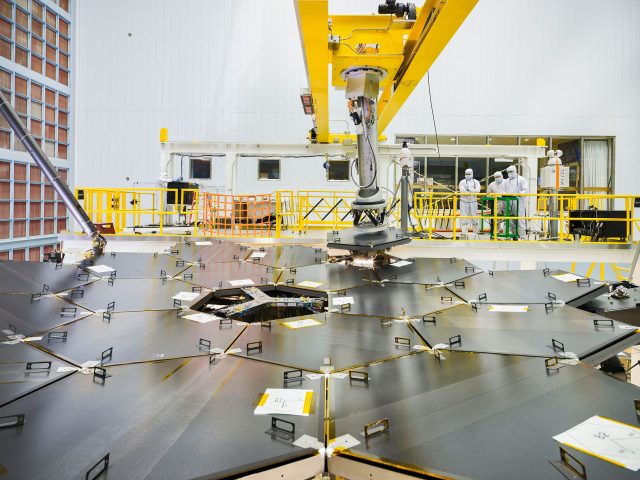Meet the largest science project in US government history—the James Webb Telescope
Ars Technica » Scientific Method 2016-03-25

Recently, the James Webb Space Telescope team used a robotic arm to install the last of the telescope's 18 mirrors onto the telescope structure. (credit: NASA)
Since Galileo first discovered the moons of Jupiter and the phases of Venus, telescopes have gotten larger, more accurate, and more powerful. They're now installed all around the world from mountaintop observatories to suburban backyards. And over those 350 years, all of them have battled the same enemy: our Earth’s atmosphere.
The thin layer of nitrogen, oxygen, and carbon dioxide that makes life possible on our planet makes observation of everything beyond the planet maddeningly difficult. The atmosphere absorbs a great deal of the light outside the visible part of the spectrum, blocking or severely attenuating information about the cosmos. Its turbulent motions distort what does get through. It scatters our own light back down into our eyes and instruments, making the night more like a slightly darker day, washing out all but the brightest celestial objects in a haze of light pollution.

A comparison of ground-based and Hubble images of Pluto and Charon. (credit: NASA, ESA, and STScI Ground Image: Canada-France-Hawaii Telescope, Hawaii)
We can reduce this atmospheric obfuscation slightly by situating our observatories at high altitudes, far from population centers. But it is not enough. If only we could open a hole in our gaseous shroud and peer through it...